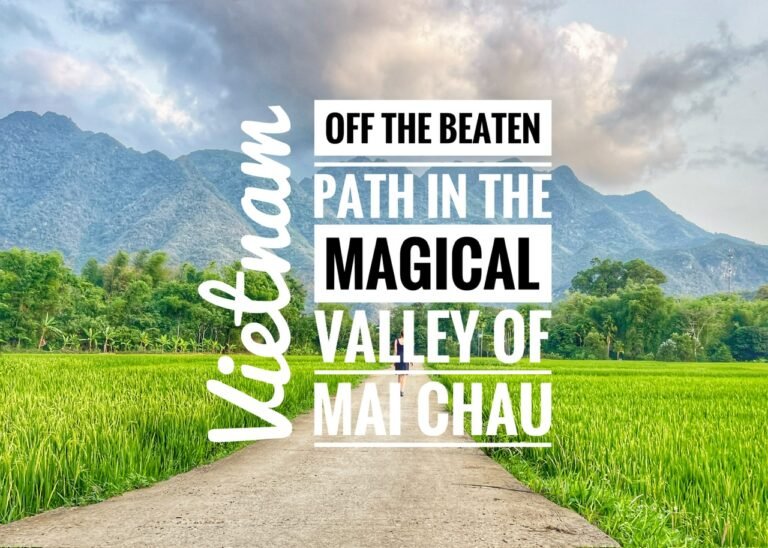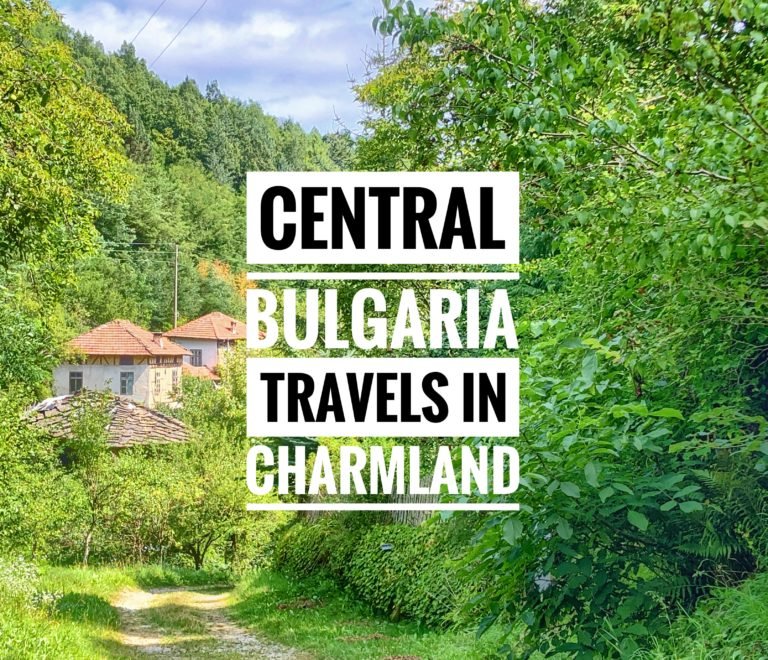
Buenos Aires is one of those places that was easy for us to stay in for a month and not even have the need or desire to meander beyond its perimeters. It’s packed with things to do, places to see, and an absolutely walkable environment. Whether simply living here and enjoying life, or “being a tourist,” it’s a one-of-a-kind dynamic city. This post focuses on some our favorite “tourist” destinations in the city, including some that might be considered a bit more off the beaten path.
La Boca Neighborhood
Our ten year anniversary may have started out as a dreary day in Buenos Aires, but the neighborhood of La Boca was bursting with vibrancy like an overflowing box of fresh Crayola markers. There is no question that La Boca, one of the most visited places in Buenos Aires, offers some delicious eye candy. At the same time, this melting pot founded by immigrants during the early 20th Century, is one of the poorest parts in the city. Its inhabitants have a strong sense of belonging to the neighborhood and usually participate in different community activities with fútbol being the pulsing heart of it, as well as tango and lots of Italian-inspired foods and activities.
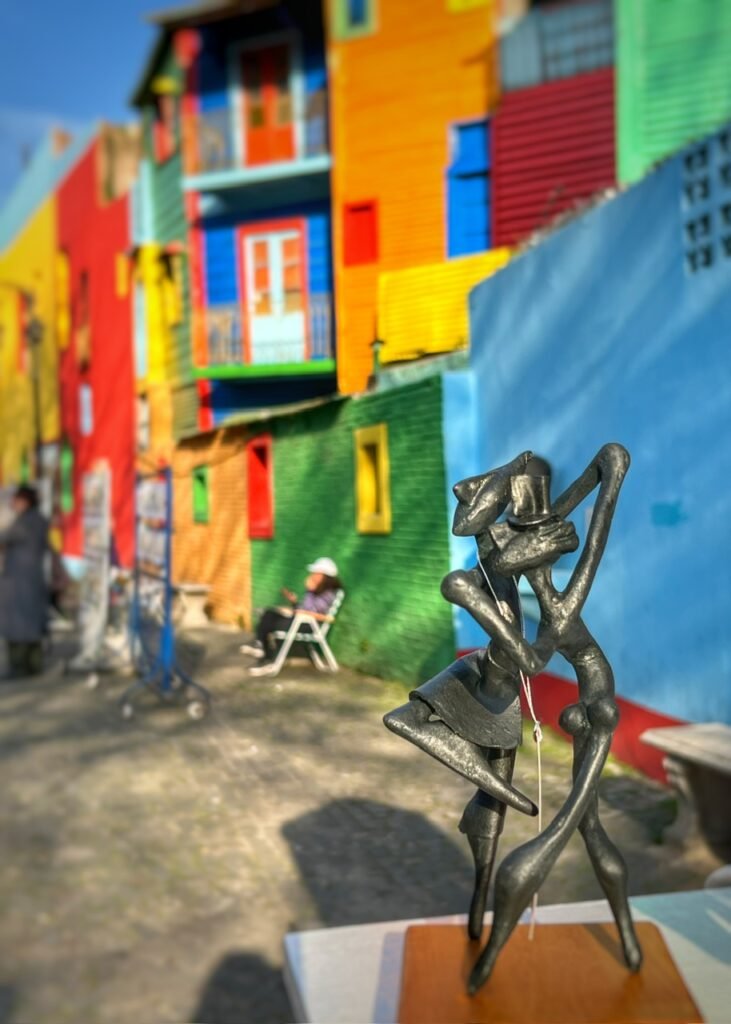

The colorful corrugated shanties that run along El Caminito are undoubtedly camera catching, but no, you’re not gonna find a bigger tourist trap in Buenos Aires. Especially this year, when images of World Cup winning futbol star, Lionel Messi are found sprinkled throughout the neighborhood.

Despite being a magnet for tourists, it’s definitely worth a visit because, with all this color, it’s impossible not to be happy here.


El Caminito, the most famous street, is blanketed with art vendors, buskers and tango dancers twirling and posing for your spare pesos.

There were also loads of overpriced cafes and restaurants, many offering sit down tango shows.


Since it was a special day for us, we did briefly consider one of these. But with the quadruple priced dishes and the crowds, we instead headed for the much quieter and lovelier courtyard restaurant called El Gran Paraíso, which wooed Greg in with its soon-to-be-not-free-smells wafting from its open-fire grill.

Much more our speed. Cheers to 10!


Greg’s $12 ribeye and Mandy’s $11 salmon. The entire anniversary meal ended up at $37 which also included bread, four glasses of wine, a cover charge and tip…all at an expensive touristy restaurant. If we had paid in cash it would have been even cheaper. When you pay by visa, as of lately, you get a discount of about 10-15% less than the blue rate, but it’s still very affordable.



After a hefty lunch, it was time to do some walking, and of course we bumped into Messi again. You can also see, in La Boca on this day), you could buy two empanadas and a drink for $3.28 (on the blue dollar rate). Empanadas normally cost $.33, so you can see this is a massive rip off.


The houses in La Boca represent the neighborhood’s typical tenement shacks, covered in colored corrugated zinc and have famous Argentinians dangling from the balconies. We are wondering when all the World Cup icons arrived because the team was plastered everywhere. What a fun way to celebrate!

Although those were obvious, we kind of wish we’d done a free walking tour here to learn about some of the other icons.


There were sections that had an aura of Barnum & Bailey, and others where it felt like being inside a cartoon. We’ve never seen anything quite like it.

Mandy, happy to be in Argentina.


Locals living normal lives amongst the chaos and color. Unfortunately, it’s also known not to be the safest neighborhood after dark.

This guy does look suspicious.

The Mural República de la Boca in front of a neighborhood pitch. Fútbol is part of the daily life in La Boca and especially the Boca Juniors Club. This soccer team has its stadium in the heart of the neighborhood and generates a real passion among the neighbors.


Most of the pizzerias, founded by Genoan blood, were not open yet, but certainly offered a lot of potential.

Oh look…more soccer stars. You can even take your photo with Messi from this god-like perch!




But despite their presence, most of the scene is just ramshackled cuteness…


A tractor cover toting craft beer cans of…the Simpsons…and yes, Messi. Despite the devilish eye from Ned Flanders, we know who truly rules this town.
El Ateneo Gran Splendid Bookstore

El Ateneo Grand Splendid is true to its name and easily the most spectacularly splendid bookstore we’ve ever seen. And I guess we’re not alone. In 2019, it was named the “world’s most beautiful bookstore” by the National Geographic. And in 2008, “The Guardian” placed it as the second most beautiful bookshop in the world.



Located in the Recoleta neighbourhood, El Grand Spendid theatre opened in 1919 and immediately became a beacon of Porteño culture, hosting ballet, opera, and the first “talkies” shown in Buenos Aires. Today, this converted bookshop has retained its former lavishness with ornate carvings, original theatre balconies, now reading nooks, and a cozy cafe behind a crimson curtained stage.


We couldn’t help pausing at the cafe to grab two fancy coffee drinks and a couple of empanadas in this extraordinary location. ($7-blue dollar rate) It’s definitely a must see in Buenos Aires!
Parque Tres de Febrero, Palermo

A day at the park can be pretty eventful in the Palermo Parks of Buenos Aires. In addition to normal things like playgrounds , trees, and running paths you’ll find pigeons putting up with parakeets, a grand eco parque zoo, massive ponds for paddling in, opulent statues, ample cafes and hundreds of locals zipping about on roller blades and bikes. But our favorite was the squawking and flitting Monk Parakeets, which are as common as pigeons in the parks of Buenos Aires. But it’s amazing how much cuter their smooshy faces are!

A three year old sábelo todo (know-It-all) informed us this was a cardinal. We had our doubts about his expertise. When we looked it up, we found out the kid was right…and wrong. It’s indeed called a Red-crested cardinal. However, it is not related to the cardinal family.

The capybaras roam free throughout the ecoparque, who behave like gigantic rodents…with teeth growing continuously, eating a bit of everything including their own poo.

And signs of armadillos ruling the world on overturned cars.

Flamingoes in the ecoparque admire their sexy reflections.

The old parrot pavilion.

The bottom half of a giraffe. And… the top half of a…oh no!!! Mandy! Run! It’s an ostrich!!!

Mandy paused here for a photo with her new local amiga, Daina, who she met through the Facebook group called “Host a Sister.” Daina was born and raised a Porteño (a person from BA) and filled Mandy in on a lot of important things to know about the country.


The grand Parque Rosenthal, which has ample opportunities for paddling and rowing.


And undoubtedly, a helluva rose display at some point in the year. It’s beyond peaceful! We loved this part of Buenos Aires.

These guys have it made. Food for the “patos” is sold everywhere.


The grand boulevard leading up to this grand monument feels like it rolled right out of Paris. The marble statue is called the Monument of the Spanish, which was a gift from Spain in 1910.

El Tambito…a place to do tango in the 19th Century. It’s quite a pity this beautiful building in such a prestigious park location has been abandoned.
Japanese Garden

Not far from Parque de Febrero, one can fine the Japanese garden. It was designed to create balance and harmony, and is easily the most zen experience we found in Buenos Aires. Inside you’ll experience meditative walking paths, reflective ponds, an island connected by rising sun colored bridges, serene Buddhist music, nibbling koi and pops of vibrant azaleas which feels like a Hallmark store during February. The cost of entrance is $690 Argentine pesos or about $1/2, depending on what day it is and what currency you have.


It was inaugurated in 1967 to coincide with a visit by the emperor of Japan, Akihito, and his wife Michiko. We were fortunate to be here in the beginning of spring (September/October) because this is the time of year when the azaleas are in full bloom.


It’s truly an oasis in the middle of the bustling city.

Awww. Young love. 🥰

The wisteria was also starting to bloom.


The Japanese use gates to represent sacred places. This is a culture we’re definitely deeply intrigued by.

Inspired by our setting, we took some delicious sushi to go sit in the park. 20 rolls were $12.40. (Blue)
Chacarita Cemetery

We’ve been to some unique cemeteries in our travels….the cheerful Merry Cemetery in Maramures, Romania, the talented topiary tombstones in Tulcan, Ecuador, and the granite gravestones carved into airplanes and cars in New Hampshire, USA. But…never have we been to ones more ostentatious than the ones in Buenos Aires. When we visited in 2016, Recoleta was at the top of our list, but this time, as we slow travel the city, we wandered into the Chacarita Cemetery, which is equally as showy, but with far fewer tourists. Roaming here amongst extravagant mausoleums feels more like walking through an affluent neighborhood of dead bodies with each tomb more like a shopfront, home or church rather than a burial site. Talk about a ghost town! It has some of the most incredible architecture, with every structure being slightly different than the one it’s adjoined to.

The streets within are labeled as such and truly feel as if you’re walking amongst a barrio, not a cemetery.


But, for every tomb that is immaculate and gleaming, you’ll find another that is in complete neglect….windows busted, coffins cracked and nature slowly reclaiming her territory. And remarkably when you hesitantly peer inside, you cannot even see to the bottom because they’re so deep. But you can see casket upon casket lining the walls in eternal familial alignment.
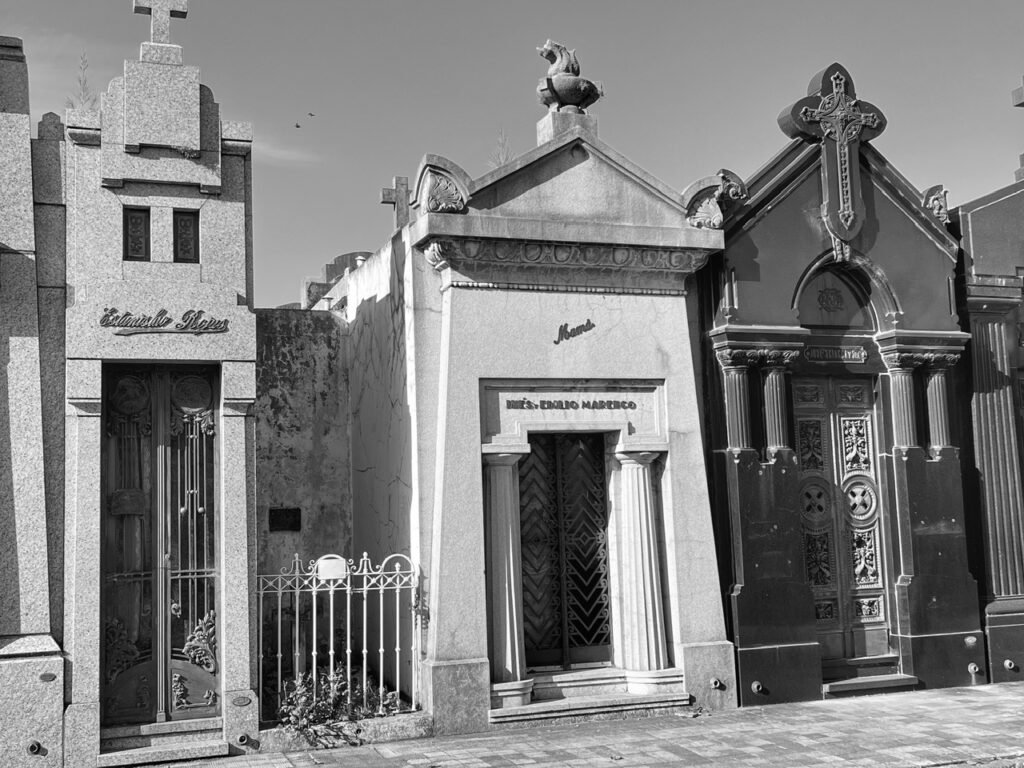
Such a happy place for “Mama” to be.


Let’s turn off that black and white filter shall we? A marble fireplace mantel frames this one in to protect the bodies inside.

Husband and wife. Who decides who is on top?


And like in any European city, a domed edifice steals the spotlight in the middle. Some have exquisite stained glass.

One of many famous names buried here…Jorge Newberry. One of Argentina’s first pop idols, he was an Argentine aviator, civil servant, engineer and scientist. He died tragically at age 38 trying to traverse the Andes in an airplane.

Another famous name was Carlos Gardel, a legendary tango singer.

We’ve found the bank of the cemetery. Maybe this where all of Argentina’s wealth has gone.

It certainly wasn’t here. This is obviously the poor guy section in the back of Chacarita.

Must be the preacher’s “house.”


This one was dedicated to the police force in Argentina.

Every detail is exquisite and elegant.

The grand boulevard down the middle fringed with trees is very similar to other places throughout the cit
Feria Artesanal Mataderos

On one Sunday we joined a group of mostly locals for a Couchsurfing meet-up at an off-the-beaten-path authentic artensanal fair on the outskirts of Buenos Aires, which was well worth the trouble of getting to by public bus. This fair offers of vibe of the “gaucho” (cowboy) side of Argentina and is held every Sunday. It features adorable local couples performing folk dances, food stalls dishing out hearty Argentine traditions and tons of vendors selling uniquely Argentine goodies.

Greg went for a tamal and Mandy, her first humita. A humita is a Native South American dish from pre-Hispanic times, which is a traditional food from the Andes and it can be found in Bolivia, Chile, Ecuador, Peru, and Argentina. It consists of fresh choclo (Peruvian maize) pounded to a paste, wrapped in a fresh corn husk, and slowly steamed or boiled in a pot of water. In this case they also adding a very enticing filling…stringy queso. Absolutely delicious. We also grabbed a Quilmes National beer. This was before discovered pints of way more delightful craft beer around the corner for $1.25. No, that is not a typo.
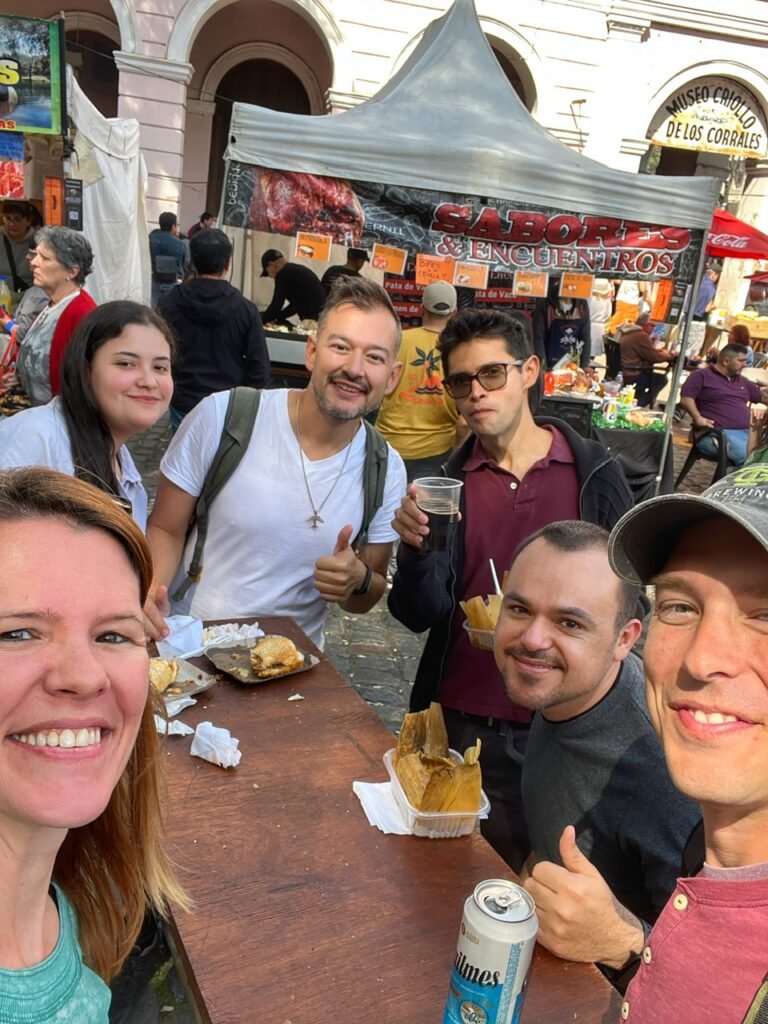
Our group consisted of two Colombians, two Pórtenos (from Buenos Aires), a French guy living in BA and a Mexican guy living in the States. We witnessed full Spanish immersion that day for sure although there was also a sprinkling of English.

One of the many food stands

Waiting for some of the others to arrive. Being in a group of Latinos, it wasn’t too surprising that some were hours late. 🤣

And just north of the feria, blocks upon blocks of people selling their personal belongings, which seems to be very common on the weekends in Buenos Aires. It seems to be how some are trying to make ends meet in this dire economic situation.
Confitería Ideal Cafe

One of the most spectacular and iconic tearooms dating from 1912 has recently had its reopening in Buenos Aires and upon opening its heavy cedar-covered doors, it truly feels like stepping back a century.



It is dripping with vibes and materials imported from Europe including French chandeliers, Italian stained glass, Czechoslovak armchairs, glossy marble, and an exquisite elevator at its entrance.

We went with new local friends Vanessa and Silvana and had such a great visit.

